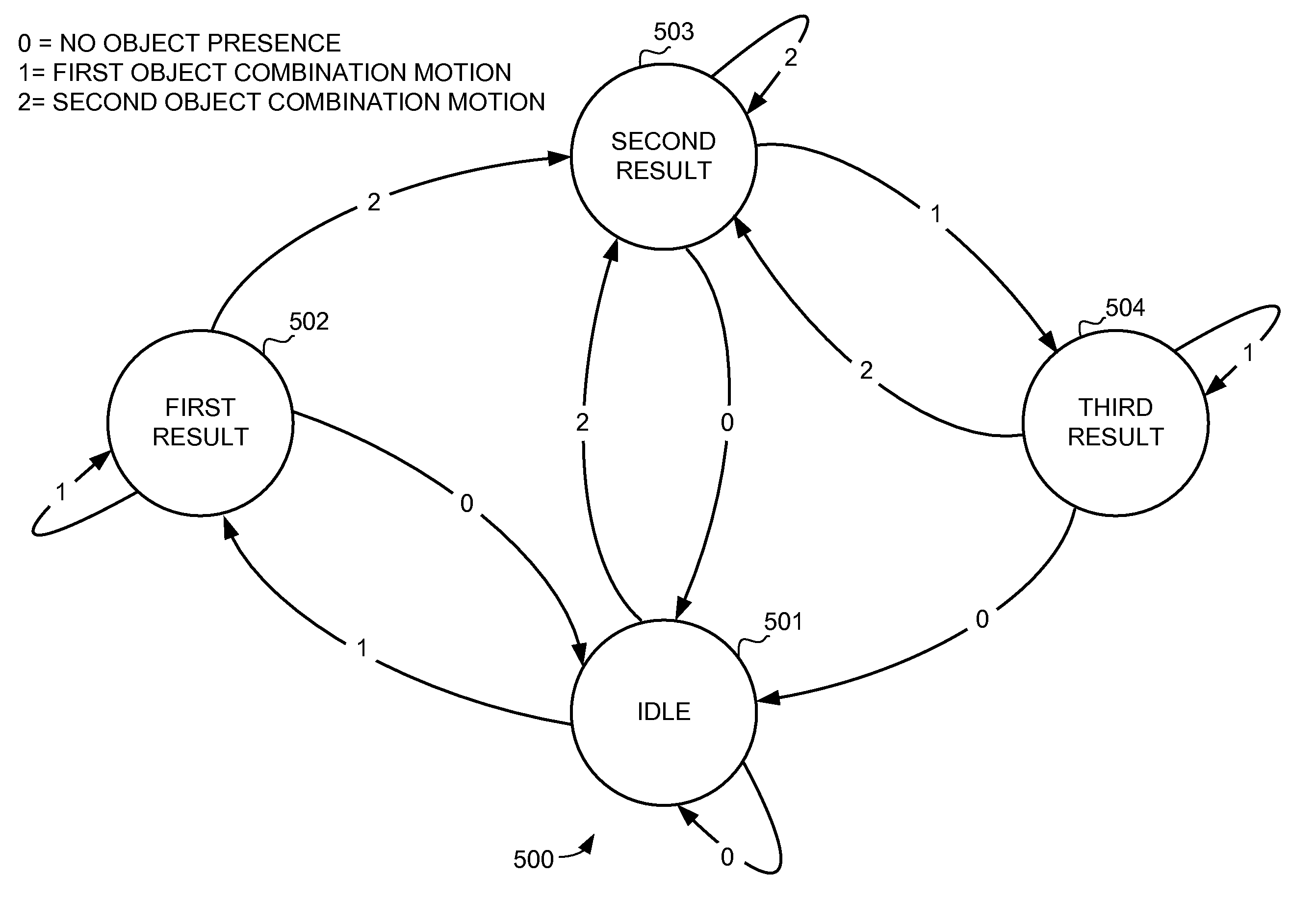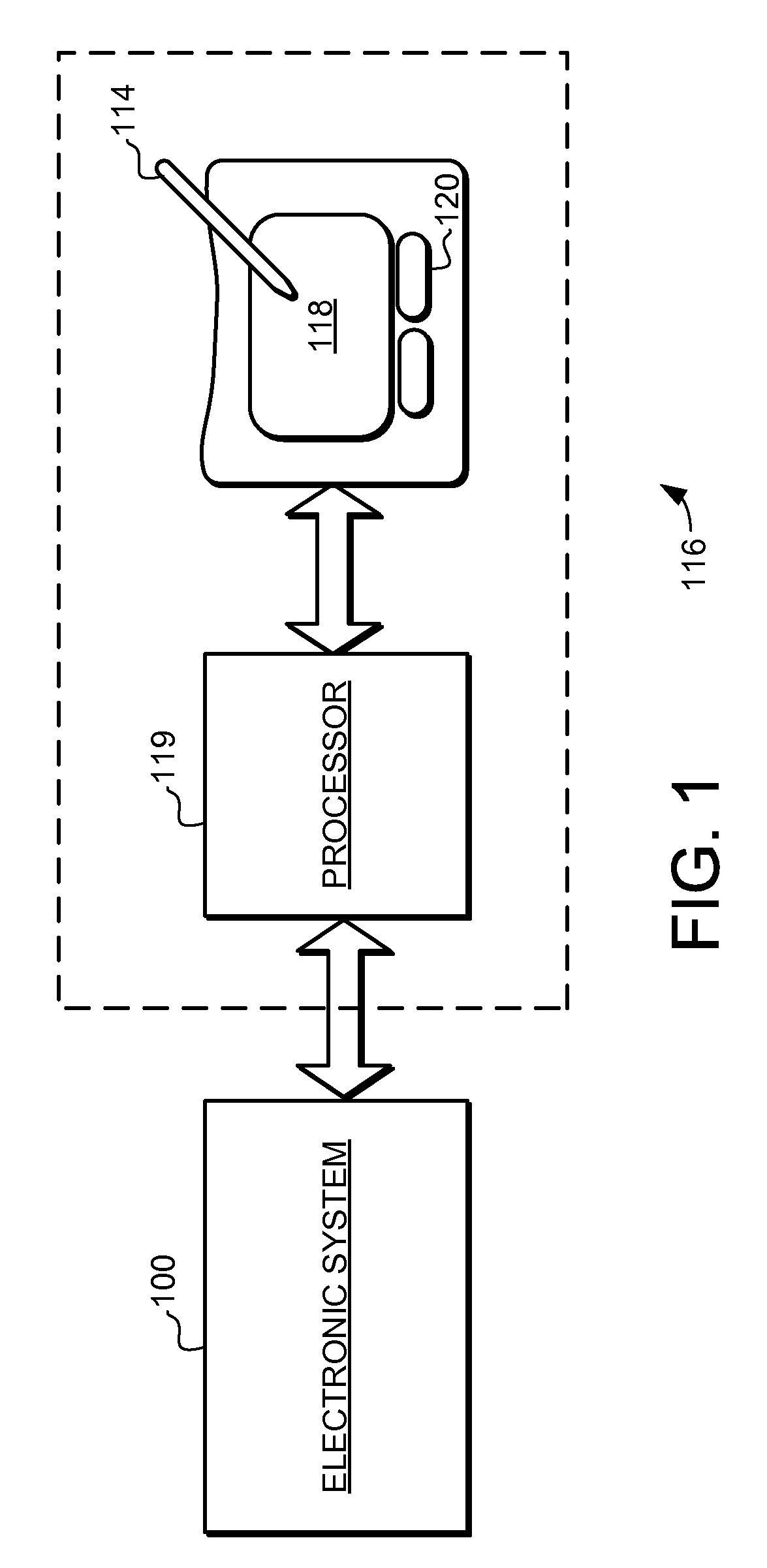Proximity sensor and method for indicating extended interface results
a proximity sensor and extended interface technology, applied in the field ofproximity sensor devices, can solve the problems of difficult use of touch sensor devices for “dragging”, dragging for long distances is typically more awkward on touch sensor devices, and dragging is much more awkward, so as to facilitate user interface navigation, facilitate improved system usability, and cause different results.
- Summary
- Abstract
- Description
- Claims
- Application Information
AI Technical Summary
Benefits of technology
Problems solved by technology
Method used
Image
Examples
Embodiment Construction
[0019]The following detailed description is merely exemplary in nature and is not intended to limit the invention or the application and uses of the invention. Furthermore, there is no intention to be bound by any expressed or implied theory presented in the preceding technical field, background, brief summary or the following detailed description.
[0020]The present invention provides a proximity sensor device and method that facilitates improved system usability. Specifically, the proximity sensor device and method provide a user with the ability to easily cause different results in an electronic system using a proximity sensor device as a user interface. For example, it can be used to facilitate user interface navigation, such as dragging and scrolling.
[0021]To cause selective results the proximity sensor device is adapted to distinguish between different object combination motions, determine relative temporal relationships between those motions, and generate user interface results...
PUM
 Login to View More
Login to View More Abstract
Description
Claims
Application Information
 Login to View More
Login to View More - R&D
- Intellectual Property
- Life Sciences
- Materials
- Tech Scout
- Unparalleled Data Quality
- Higher Quality Content
- 60% Fewer Hallucinations
Browse by: Latest US Patents, China's latest patents, Technical Efficacy Thesaurus, Application Domain, Technology Topic, Popular Technical Reports.
© 2025 PatSnap. All rights reserved.Legal|Privacy policy|Modern Slavery Act Transparency Statement|Sitemap|About US| Contact US: help@patsnap.com



